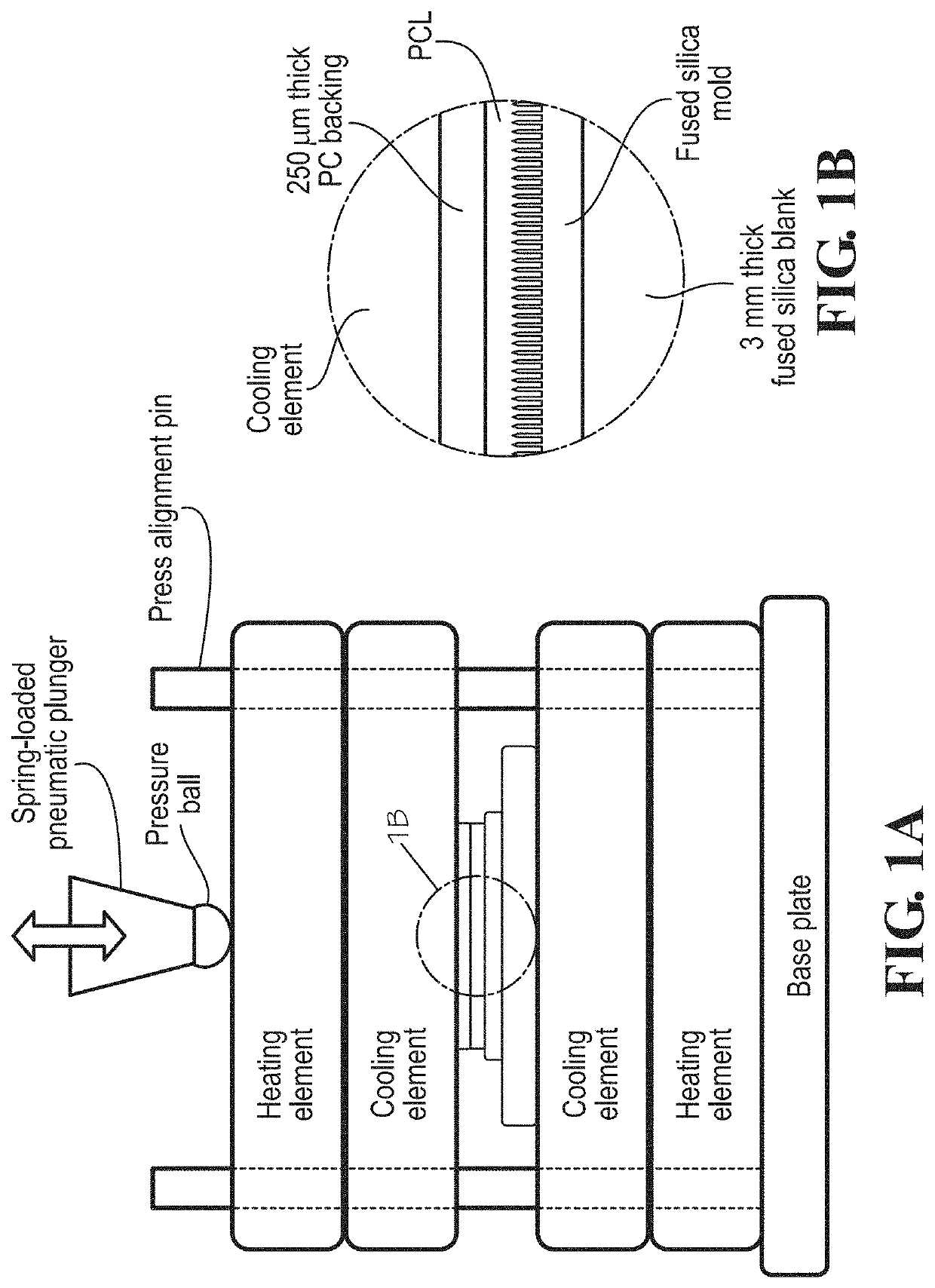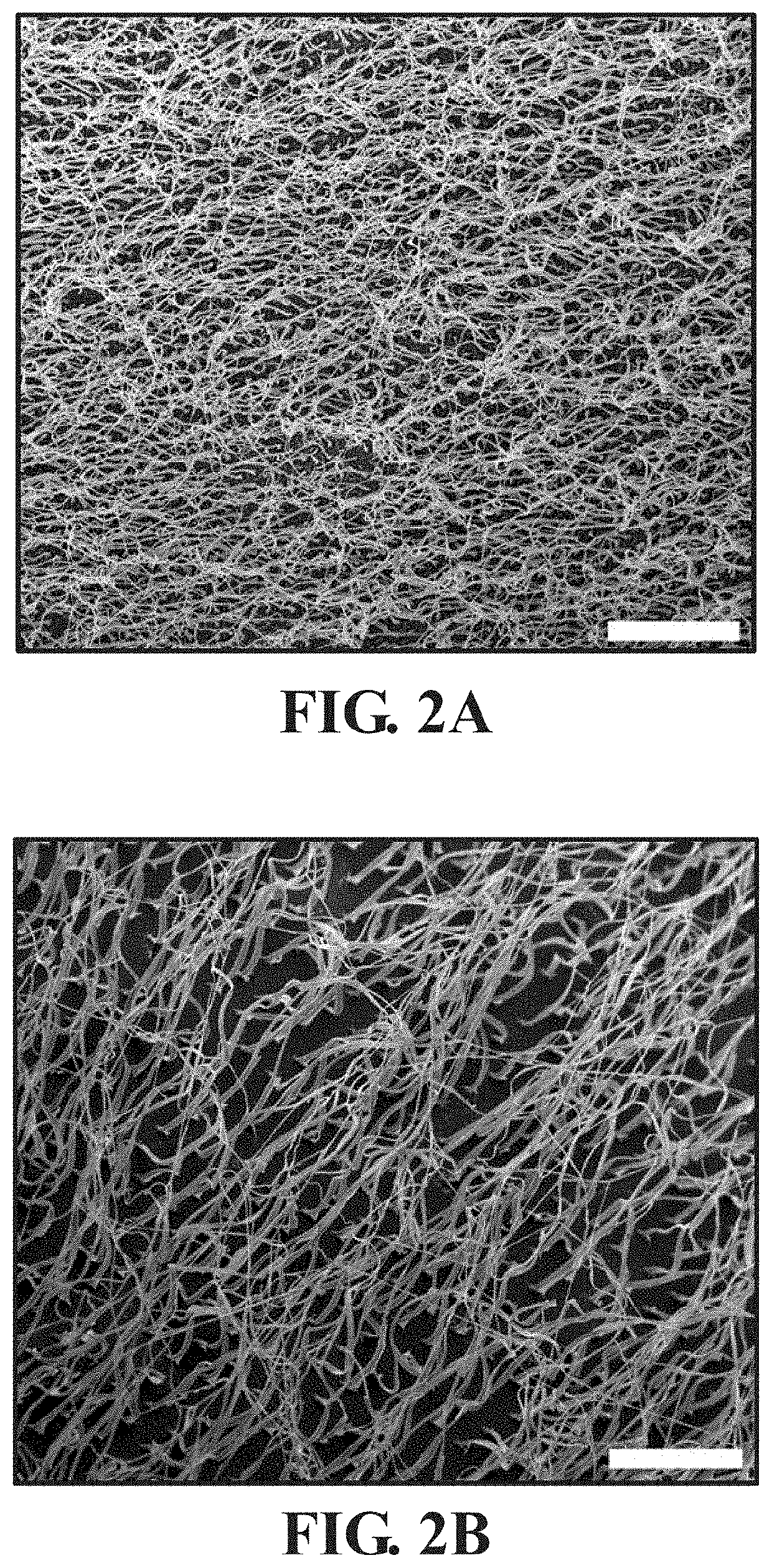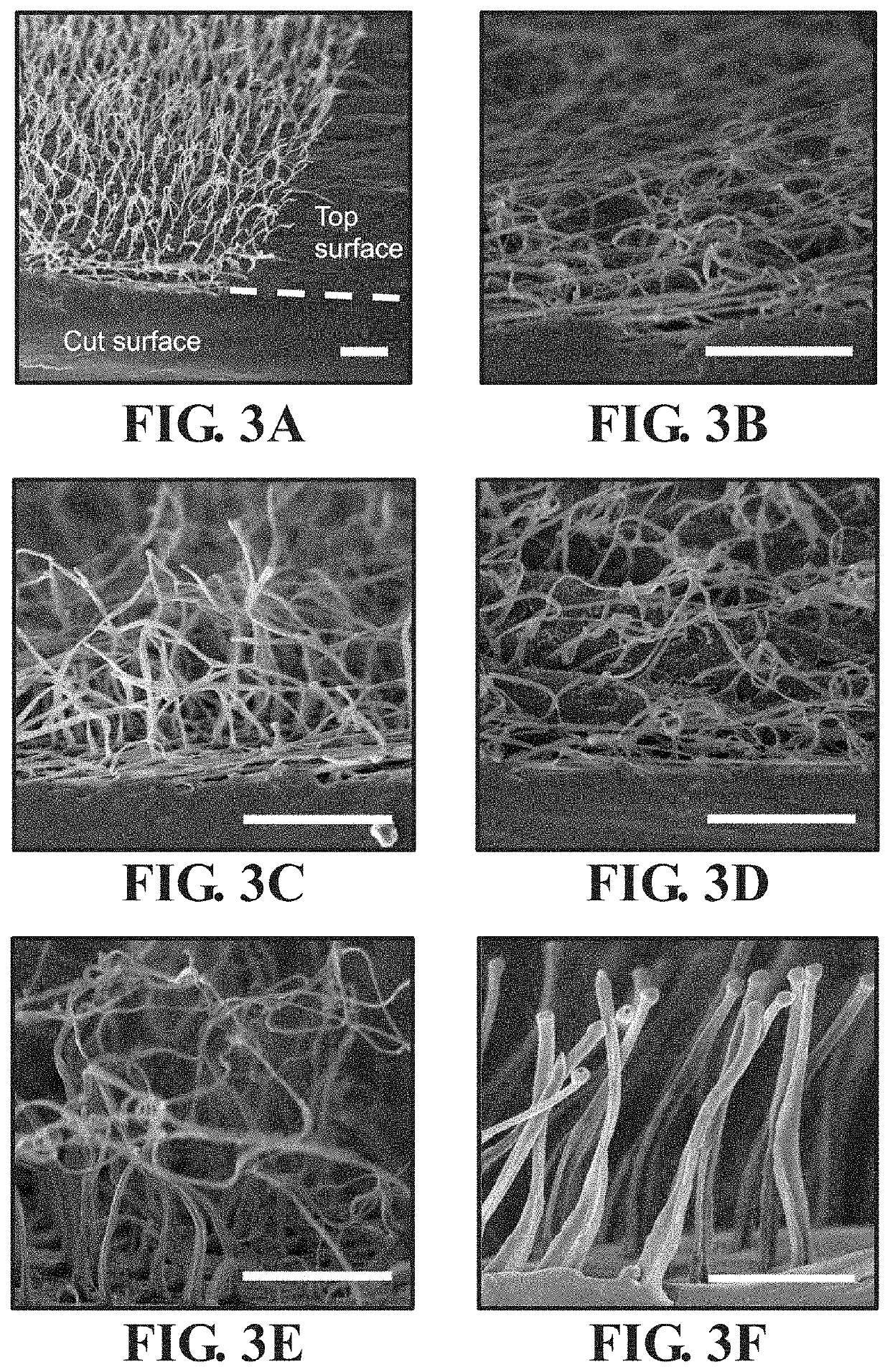Biomimetic cell culture substrates
a cell culture substrate and biomimetic technology, applied in the field of cell culture substrates, can solve the problems of limited material flexibility, difficult to uncouple gel properties, and reduced cell-cell interaction, so as to increase the expression of critical regulators, improve cell-cell interaction, and eliminate variability
- Summary
- Abstract
- Description
- Claims
- Application Information
AI Technical Summary
Benefits of technology
Problems solved by technology
Method used
Image
Examples
example 1
[0065]This example employed novel cell culture substrates created by hot-pressing poly(ε-caprolactone) films in femtosecond laser-ablated nanopore molds to form patterned polymer nanofiber matrices on flat PCL substrates. Quantitative real-time polymerase chain reaction and immunocytochemistry were used to show that these polymer nanofiber matrices increased expression of several critical self-renewal factors and markers of cell-cell interaction, thereby maintaining stemness of hMSCs cultured thereon.
Materials and Methods
[0066]All reagents were purchased from Sigma-Aldrich (St. Louis, Mo.) at the highest available quality unless otherwise noted.
[0067]Culture Substrate Fabrication
[0068]For this work, a one millimeter thick, double side polished fused silica wafer (Mark Optics, Santa Ana, Calif.) was diced into 22 mm by 22 mm square chips. Each chip was patterned with a single 10 mm by 10 mm array of nanopores using the femtosecond laser machining system [29]. Each array was patterned...
example 2
[0092]This example employed the novel hot-pressing method to identify additional thermoplastic polymers suitable for use in the fabrication of patterned polymer nanofiber matrices from laser ablated nanopore molds.
[0093]Fabrication of Polymer Fiber Substrates from Additional Polymers
[0094]The technique of forming arrays of polymer nanofibers by hot-pressing thermoplastic polymers into patterned femtosecond laser-ablated nanopore molds using the hot-pressing system depicted in FIGS. 1A-B was successfully demonstrated for each of the polymers listed in Table 2, which provides the glass transition, TG, and melting, TM, temperatures of each polymer. The specific hot-pressing processing conditions used for each polymer and the average recorded pile height and length dimensions for nanofibers formed from these polymers are given in Table 3. All nanofibers were hot-pressed using the applicable temperature and pressure parameters listed in Table 3, and the temporal hold conditions given in ...
PUM
| Property | Measurement | Unit |
|---|---|---|
| average diameter | aaaaa | aaaaa |
| length | aaaaa | aaaaa |
| length | aaaaa | aaaaa |
Abstract
Description
Claims
Application Information
 Login to View More
Login to View More - R&D
- Intellectual Property
- Life Sciences
- Materials
- Tech Scout
- Unparalleled Data Quality
- Higher Quality Content
- 60% Fewer Hallucinations
Browse by: Latest US Patents, China's latest patents, Technical Efficacy Thesaurus, Application Domain, Technology Topic, Popular Technical Reports.
© 2025 PatSnap. All rights reserved.Legal|Privacy policy|Modern Slavery Act Transparency Statement|Sitemap|About US| Contact US: help@patsnap.com



